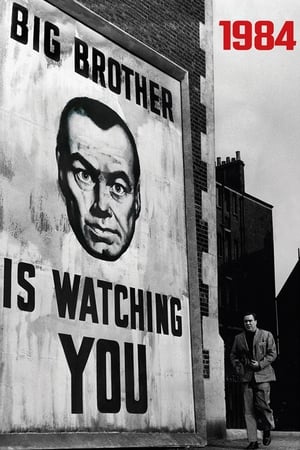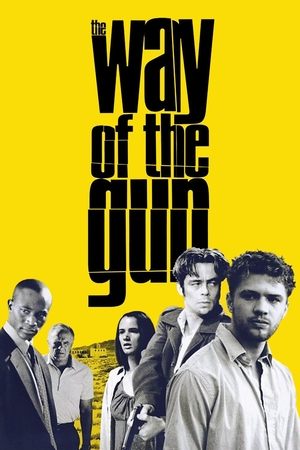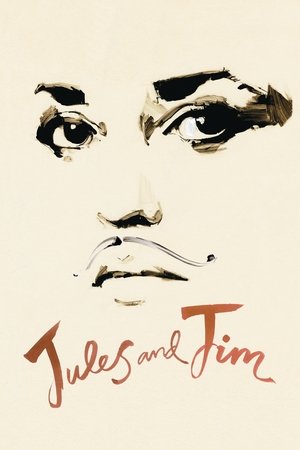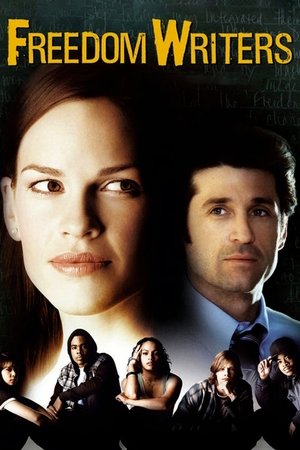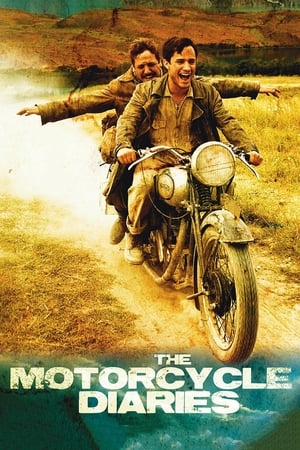Overview
An ambitious Indian driver uses his wit and cunning to escape from poverty and rise to the top. An epic journey based on the New York Times bestseller.
Reviews
If you enjoy reading my Spoiler-Free reviews, please follow my blog @
https://www.msbreviews.com
Even though The White Tiger isn’t exactly the first review I published in 2021, it was the first film I watched at the start of this new year. I really didn’t know what to expect. I’ve never seen anything from any actor involved in the movie or from the writer-director, Ramin Bahrani. I still follow the “trailer-free” philosophy that I established back in 2017, so my knowledge about the actual story was close to null. Nevertheless, all of these details left me quite excited, to be completely honest. Starting 2021 with a 100% blind watch (something I sincerely appreciate) is an excellent way of beginning a year that I hope will be better than the previous one (it shouldn’t be that hard).
From the get-go, it’s clear that Bahrani will use his film in an enlightening, educational manner to teach its viewers about India’s sociopolitical stratification (caste system) and its economic consequences. The viewer follows Adarsh Gourav’s character, Balram, who’s trying to get away from the dated traditions and become a real entrepreneur. I rarely love straight-up political movies, even when these follow the satire route. On par with religion, these are two matters that I’ve been avoiding talking about my whole life. From corruption to wars, there are literally hundreds of reasons that justify my detachment from these topics.
With that said, The White Tiger holds several significant messages concerning poor families (low caste) who must work hard in unimaginable conditions just to survive, specifically in India. It also approaches ideas such as arranged marriage and the unbreakable master-servant bond. These cultural lessons on India’s sociopolitical and socioeconomic structure are by far the most interesting aspect of the entire screenplay, and Bahrani does a fantastic job of conveying this awareness to the audience in a compelling manner. With the help of Paolo Carnera (DP), the story is filmed at ground-level, putting the viewers in the dirty, smelly, impoverished streets of different places across India, generating a realistic atmosphere. Chad Keith’s production design is also vital to create that immersive Indian environment.
Despite the wonderful technical aspects, Bahrani’s script is packed with an overwhelming succession of narrative events that fail to further develop the protagonist or impact the story, especially from the mid-point of the film onwards. Some sequences are similar to previous ones, ultimately making the movie feel repetitive while not moving the plot forward. Unfortunately, it really feels like the viewers could miss a couple of minutes here and there and not miss anything genuinely relevant. Therefore, Bahrani’s flick becomes overlong and slower than what it needs to be, consequently affecting the viewers’ attention, which might result in some of the critical messages getting lost in the transmission, mainly the economic one. Balram’s narration helps, but Bahrani could have found a better (and more logical) justification for this storytelling detail.
In addition to this, it’s a film that depends on the viewers’ knowledge about India and their interest in learning more about it. In my case, The White Tiger didn’t surprise me with any information - which doesn’t help the entertainment value - but its visuals helped me connect what I knew to something quite palpable. I do want to end on a positive note, though. The unknown cast is phenomenal, but the biggest praise must go to Adarsh Gourav’s first lead role. Balram is a well-written character who will definitely connect with many viewers all around the world. Gourav shows quite a good range, demonstrating his comedic timing and funny expressions, but also an emotional side that truly elevated some of the best scenes in the entire movie.
The White Tiger employs the English and Indian languages to educate viewers about India’s sociopolitical and socioeconomic system by following Adarsh Gourav’s character, who narrates the largest email ever about his life. Despite the somewhat silly setup, Ramin Bahrani delivers an enlightening, interesting narrative with dozens of relevant messages regarding India’s culture and the incredibly challenging way of living of most of its population. Gourav offers a brilliant performance (debut in a lead role), elevating a well-written, relatable character who goes through an unbelievable life story surrounded by an immersive production design and terrific camera work, creating a realistic environment. Unfortunately, this Netflix’s flick is overwhelmed by an absurd amount of gradually unimpactful narrative events, unnecessarily extending the runtime and hurting the overall pacing. By becoming repetitive, the viewers’ attention levels decrease, leading to a scenario where some of the essential lessons get lost in their delivery. Overall, I recommend it to viewers interested in learning more about India and people who actually lived or were born there, but if your knowledge about the country is good enough, it might not be as entertaining and informative as you would expect.
Rating: C+
If you enjoy reading my Spoiler-Free reviews, please follow my blog @
https://www.msbreviews.com
Even though The White Tiger isn’t exactly the first review I published in 2021, it was the first film I watched at the start of this new year. I really didn’t know what to expect. I’ve never seen anything from any actor involved in the movie or from the writer-director, Ramin Bahrani. I still follow the “trailer-free” philosophy that I established back in 2017, so my knowledge about the actual story was close to null. Nevertheless, all of these details left me quite excited, to be completely honest. Starting 2021 with a 100% blind watch (something I sincerely appreciate) is an excellent way of beginning a year that I hope will be better than the previous one (it shouldn’t be that hard).
From the get-go, it’s clear that Bahrani will use his film in an enlightening, educational manner to teach its viewers about India’s sociopolitical stratification (caste system) and its economic consequences. The viewer follows Adarsh Gourav’s character, Balram, who’s trying to get away from the dated traditions and become a real entrepreneur. I rarely love straight-up political movies, even when these follow the satire route. On par with religion, these are two matters that I’ve been avoiding talking about my whole life. From corruption to wars, there are literally hundreds of reasons that justify my detachment from these topics.
With that said, The White Tiger holds several significant messages concerning poor families (low caste) who must work hard in unimaginable conditions just to survive, specifically in India. It also approaches ideas such as arranged marriage and the unbreakable master-servant bond. These cultural lessons on India’s sociopolitical and socioeconomic structure are by far the most interesting aspect of the entire screenplay, and Bahrani does a fantastic job of conveying this awareness to the audience in a compelling manner. With the help of Paolo Carnera (DP), the story is filmed at ground-level, putting the viewers in the dirty, smelly, impoverished streets of different places across India, generating a realistic atmosphere. Chad Keith’s production design is also vital to create that immersive Indian environment.
Despite the wonderful technical aspects, Bahrani’s script is packed with an overwhelming succession of narrative events that fail to further develop the protagonist or impact the story, especially from the mid-point of the film onwards. Some sequences are similar to previous ones, ultimately making the movie feel repetitive while not moving the plot forward. Unfortunately, it really feels like the viewers could miss a couple of minutes here and there and not miss anything genuinely relevant. Therefore, Bahrani’s flick becomes overlong and slower than what it needs to be, consequently affecting the viewers’ attention, which might result in some of the critical messages getting lost in the transmission, mainly the economic one. Balram’s narration helps, but Bahrani could have found a better (and more logical) justification for this storytelling detail.
In addition to this, it’s a film that depends on the viewers’ knowledge about India and their interest in learning more about it. In my case, The White Tiger didn’t surprise me with any information - which doesn’t help the entertainment value - but its visuals helped me connect what I knew to something quite palpable. I do want to end on a positive note, though. The unknown cast is phenomenal, but the biggest praise must go to Adarsh Gourav’s first lead role. Balram is a well-written character who will definitely connect with many viewers all around the world. Gourav shows quite a good range, demonstrating his comedic timing and funny expressions, but also an emotional side that truly elevated some of the best scenes in the entire movie.
The White Tiger employs the English and Indian languages to educate viewers about India’s sociopolitical and socioeconomic system by following Adarsh Gourav’s character, who narrates the largest email ever about his life. Despite the somewhat silly setup, Ramin Bahrani delivers an enlightening, interesting narrative with dozens of relevant messages regarding India’s culture and the incredibly challenging way of living of most of its population. Gourav offers a brilliant performance (debut in a lead role), elevating a well-written, relatable character who goes through an unbelievable life story surrounded by an immersive production design and terrific camera work, creating a realistic environment. Unfortunately, this Netflix’s flick is overwhelmed by an absurd amount of gradually unimpactful narrative events, unnecessarily extending the runtime and hurting the overall pacing. By becoming repetitive, the viewers’ attention levels decrease, leading to a scenario where some of the essential lessons get lost in their delivery. Overall, I recommend it to viewers interested in learning more about India and people who actually lived or were born there, but if your knowledge about the country is good enough, it might not be as entertaining and informative as you would expect.
Rating: C+
Humanity’s worst kept secret is that the world of wealth and privilege go hand in hand, and that idea is explored in “The White Tiger,” the big screen adaptation of Aravind Adiga‘s 2008 prize-winning novel. The author wrote the book as a critique of the state of things in his home country, but the situation in India and the story’s themes of corruption within the political system and the separation of the elite and working classes is universally relatable to most citizens across the globe.
Balram Halwai (Adarsh Gourav) narrates his rise from poor villager to successful entrepreneur in modern India, starting with a flashback narrative when he was a child living in the slums. He has been ambitious his entire life, learning English and seizing opportunity whenever a chance arises. Balram talks his way into becoming a personal driver for the wealthy Ashok (Rajkummar Rao) and his wife Pinky (Priyanka Chopra), a couple who have returned to India after living in America for many years, but finds himself at the beck and call of the more corrupt associates of the family. They’re up to no good, paying off politicians and often treating Balram like trash. But just when he thinks he’s made himself indispensable to the family, they betray him in a way that could ruin his life forever. On the verge of losing everything, Balram rises up against this inequality with a vengeance, and it’s shocking what he must do to truly become free.
The film has a moral complexity that’s provocative and disturbing. Balram first declares that India’s caste system is divided into two categories: “men with big bellies, and men with small bellies.” It’s one of the simplest ways of thinking about this division, but he’s not wrong. As the man is exposed to big city ideas and becomes envious of the upper class lifestyle, he begins rejecting centuries-old traditions and cutting ties with his family and the village back home. Capitalism consumes him, and he’ll even entertain murder to get ahead.
The story gives a compelling look into the working class and societal changes in modern-day India, where those in charge aren’t too keen on investing in things to help the poor. As the “have-nots” begin speaking up and letting their ambition be known, it causes a conflict with those at the top. “Rich men are born with opportunities they can waste,” as Balram says. Corruption is everywhere. Sound familiar?
Director Ramin Bahrani doesn’t turn an eye to the worst parts of his lead character, making Balram a person you both love and loathe at different points in the story. It’s part of the reason “The White Tiger” is so intriguing, and it adds a layer of relatability to the ongoing class struggle in a globalized world.
By: Louisa Moore

 125 min
125 min
 6.974
6.974
 2021
2021
 India
India
 Manuel São Bento wrote:
Manuel São Bento wrote:
